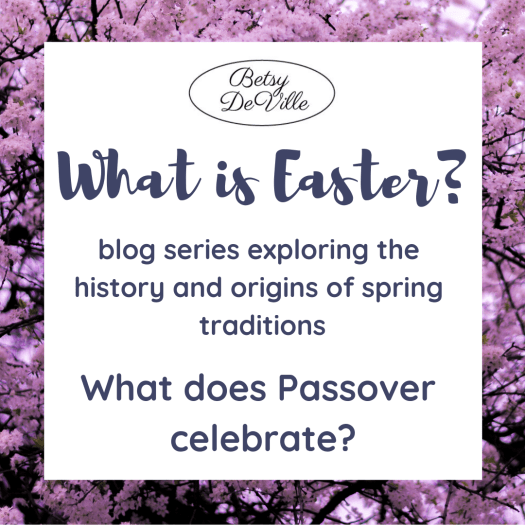
Let’s unpack and review Passover.
Many of the words used to describe Easter traditions in Christianity are based off of the word Passover. In Hebrew, pesah means, “the passing over.” In Christianity, one may hear Paschal Feast (Easter feast), Paschal Lamb (death of Jesus), and Paschal Blood (sacrificial blood). The connection between the two is ritual sacrifice of life with the intention of protecting or benefiting others. In the Jewish religion, it is animal blood and in the Christian religion, it is human blood.
In the Jewish religion, this is the concept of God passing over people in certain marked homes and slaughtering those in other unmarked homes.
Passover is a Jewish celebration of freedom from slavery and the creation of a new nation under Moses around 1300 BCE. This freedom came from their god as he inflicted several (the numbers found in the Bible are not consistent) plagues on the Egyptians who were holding them enslaved. The final plague was the killing of the first-born children of all Egyptian families. The Israelites were to mark their doorposts with blood from a sacrificed lamb. This mark would ensure that their own children would not be killed. I will take just a brief moment to note the absurdity and horror that sacrificial blood must be used to mark a doorpost for an omnipotent being to kill innocent children who were of the wrong race. OK, moving on…
Another part of the celebration is not using leavening, such as yeast. Wheat-flour based foods that use baking soda or baking powder are permissible. To prepare, the home is cleaned thoroughly and laws prevent possessing even small quantities of yeast. A formal search ritual is completed in each home. Matzoh is a commonly sold unleavened bread that you might see in stores around this time. This tradition comes from the haste in which the people left Egypt.
Historical note: baking soda as a leavening agent did not come into use until 1846. Other ingredients with less reliability came into use in the late 1700s but prior to that, wild harvested yeast was the most common method used to get breads to rise.
However, the celebration rituals now called Passover probably started well before that as a spring celebration of the first grains of the season eaten freshly harvested grains, or, unleavened. Along with that, the tradition of sacrificial blood on the door frame would ensure that demonic forces could not enter the home. There was an offering either per family or in a temple also.
Historians have found evidence for the ten plagues of Egypt. Among other things, a drought and later, a volcanic eruption could have led to the reports of abundance of disease carrying insects and the subsequent death of livestock, strong storms and unusual weather, tsunami, red water, illness, etc. Specifically, historians have theorized that a particular mycotoxin could have killed the oldest child in each home while they harvested and ate grain. Mycotoxin is toxic fungus that may grow on grain in wet periods. It can be toxic if inhaled or eaten. Modern practices of mechanical harvesting, cleaning and sorting of grains prevent illness or death from mycotoxins today.
Passover is connected to Easter in several ways and has an interesting (and violent) history all its own.
Easter Dresses, Hats and Special Clothing Easter, Eostre, and Gifts from Benevolent Strangers
Discover more from Betsy DeVille
Subscribe to get the latest posts sent to your email.